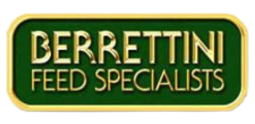
A horse’s dietary needs change throughout the year, depending on the season. These adjustments may be small tweaks for some horses, but for others, their winter and summer diets can look very different.
In summer, horses turned out on pasture often consume more forage, which means they get more calories and nutrients than they would from their winter forage. As the seasons change, it’s important to adjust your horse’s diet accordingly to meet their evolving nutritional needs.
Spring and Summer Diet Considerations for Horses
As winter gives way to spring and horses begin grazing on fresh grass, it’s time to re-evaluate their diet. Monitor your pastures, the condition of the grass, and how much your horses are consuming. Always introduce horses to fresh grass slowly, starting with short grazing sessions or using a grazing muzzle to prevent health issues.
This gradual transition will help prevent problems like colic or laminitis, which can occur when horses suddenly ingest large amounts of sugar from spring grass. The sugar and nutrient levels in fresh grass are much higher, so it’s important to make dietary changes carefully.
While your horses adjust to fresh grass, continue providing quality hay and a balanced feed or ration balancer. You can gradually reduce the amount of hay and increase grazing time as the season progresses.
This is also a good time to assess your horse’s specific nutritional needs based on age, activity level, and any health concerns. For example, easy keepers grazing on summer grass may benefit from switching to a ration balancer.
As horses shed their winter coats in the spring, evaluate their overall body condition and adjust their grain intake accordingly. Nutrition plays a role in shedding—deficiencies in amino acids and protein can slow the shedding process, while omega-3 and omega-6 fatty acids, found in fresh pastures, can improve coat quality and shedding speed. Adding omega fatty acids, such as those in **Wholesome Blends Omega Plus Oil**, can help with this transition and improve body condition in horses that may appear thin after the winter months.
Fall and Winter Diet Considerations for Horses
The quality of forage and your horses’ dietary needs change significantly in the fall. Cooler temperatures slow plant growth, causing grass to store more sugars, which can lead to higher concentrations of sugar in the plants. This is particularly important for horses that are overweight, have sugar sensitivities, or are at risk for laminitis. These concentrated sugars can also cause digestive issues and increase the risk of colic.
As pastures lose their grass cover, you will need to increase the amount of high-quality hay provided for your horses during the winter months. Look for hay that smells fresh and has a high leaf-to-stem ratio with bright green color—avoid hay that smells musty or is yellow or brown. The maturity of the plant when harvested affects its quality. Younger, leafier plants tend to have more protein, energy, and nutrients, while older plants are more fibrous and less digestible. If you’re unsure of the hay’s quality, consider having it lab tested.
To maintain body condition and health through the winter, supplement your horse’s diet with high-quality feed or ration balancers, especially if the hay quality is lower. You can also provide several small meals of hay throughout the day, which helps horses stay warm, supports natural grazing behavior, and prevents boredom during long periods in the stall.
When transitioning from pasture grass to hay, or when introducing a new batch of hay, adjust your horse’s grain intake and the use of ration balancers gradually to avoid digestive upset.
For horses eating more than 50% alfalfa hay, consider a ration balancer like Alfa Essentials®, which is low in sugar and starch and contains no added iron. This is ideal for easy keepers or as a top-dress with regular grain. For horses eating more than 50% grass hay, Essential K® is a good choice.
Ration balancers ensure horses receive the proper vitamins and minerals they may lack, and they’re particularly useful for easy keepers that don’t require large amounts of grain.
Since many horses are less active in winter, it’s important to balance calorie intake with their lower activity levels. Consult with your veterinarian to adjust grain rations accordingly.
By planning ahead in the fall and adjusting your horse’s diet and forage, you can help prevent winter-related health concerns. This includes issues such as weight loss. If you need guidance on your horse’s nutrition plan, reach out for a free, personalized feeding consultation.
Article By: Sarah Welk Baynum | Courtesy of Tribute Equine Nutrition
